| Photojournal
- 23
August 2004
Florals
from Glenbrook Ravine Park
|
On Monday I spent the
day at work with a bunch of unpleasant meetings and so I didn't
get outside with my camera until the early evening. As I didn't
have much light left, I decided to go somewhere that could yield
some nice photos from a short visit. And I knew just the place:
Glenbrook Ravine Park.
This is a small park
in New Westminster with its main entrance about a block north
of where Front Street meets Columbia, so it's on my way home if
I take North Road and Columbia. The park contains a community
meeting hall, a small flower garden, and a path up into the ravine.
The city does a really good job with the garden at this park,
and even this late into August there was bound to be some interesting
flowers around.
Unfortunately, I'm
much worse at identifying flowers than I am at identifying shorebirds,
so I have to do a lot of guessing about genera and I don't even
try to identify the species. If you can i.d. any of these flowers
or plants positively, drop me a note.
I started at a clump
with a nice mixture of colors: purple leaves, red flowers, and
light purple flowers, set off by green leaves. I'm not even going
to guess at what these plants are.
|
|
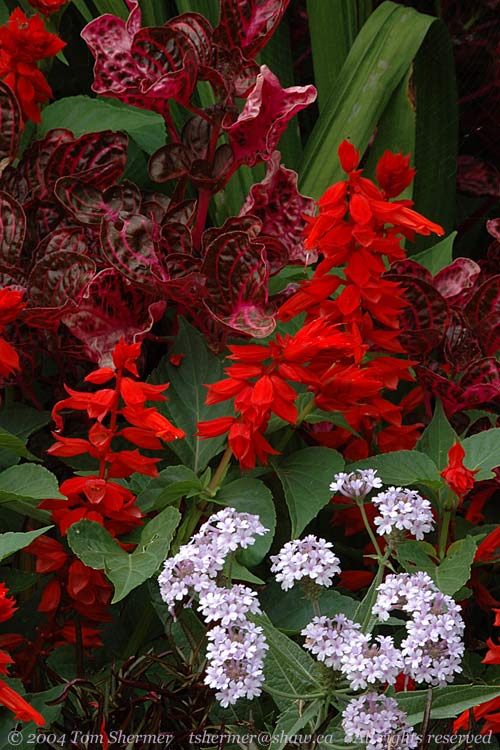 |
| I then moved
on to some fuschias that had more light on them. |
|
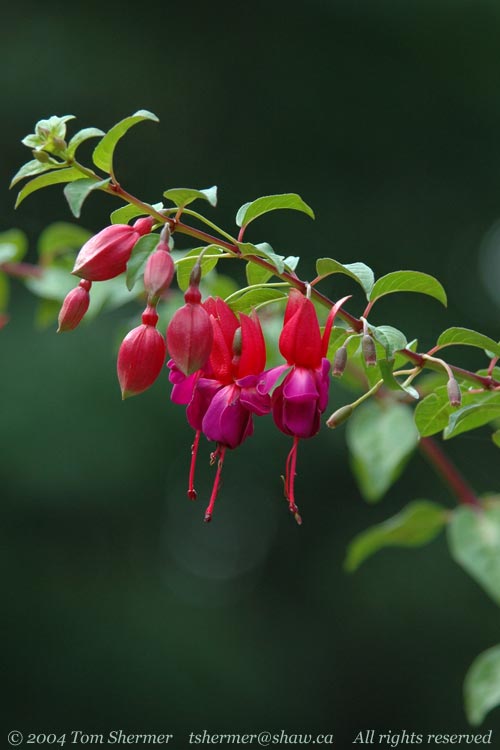 |
|
I played around some
with the apeture setting in my photos. For you non-photographers,
cameras have an adjustment called apeture, which controls
how wide the shutter opens when the picture is taken. If the apeture
is very small (like a pinhole camera) then everything will be
in focus, like in this photo. I think the flower is some sort
of sunflower (Helianthus). It's in the sunflower tribe, at the
very least.
|
|
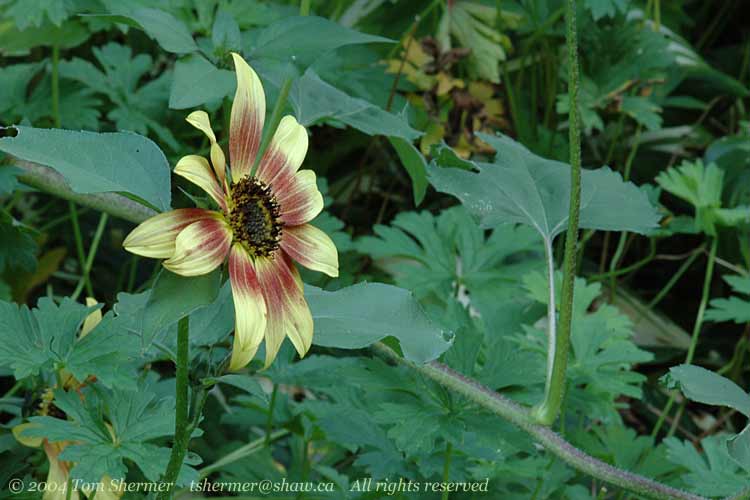 |
|
Back to apeture...if
the apeture is large, however, then only the object that the camera
is focussed on (and other objects at the same distance) will appear
in focus, and everything else is out of focus.
|
|
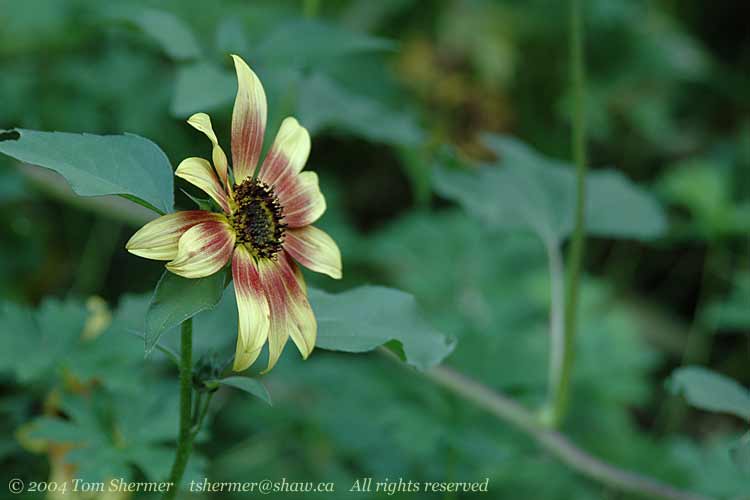 |
|
Apeture is meaasured
in f-numbers; with higher numbers indicating smaller apeture.
The first sunflower photo was taken with apeture f/32, and the
second one with f/5.3.
To me, the second photo
is much nicer; it brings the viewer's attention right to the flower.
In the first, there seems to be too much competing detail and
the idea of the photo is lost.
So one of the things
that a photographer must always be thinking about is apeture and
its effect (called depth of field) in the image. The first
sunflower is said to have a high, large, or deep depth of field,
and the second a low, short, small, or shallow depth of field.
(Yes, a "deep depth of something" sounds strange to
me too, but I've heard it said.)
And just to complicate
things further, small apetures require long exposure time whereas
large apetures don't. The first sunflower was exposed for a full
1/4 of a second (which is a huge amount of time, relatively speaking)
and the second for 1/125 of a second, i.e. the first one took
about 31 times as long as the second. Keeping the shutter open
that long is dangerous as the flower may very well move a bit
in the breeze and make the photo all blurry.
Now, 1/4 of a second
or thereabouts is just not an option when taking photos of birds,
as birds are always moving around. Even 1/125 of a second is riding
the edge of what will give me a clear photo. That means that I
can't use a small apeture when shooting birds, so almost all of
my bird photos have a shallow depth of field.
Well, I digressed.
Back to my Monday. Here's a shot of some cannas and waterlilies
in the pond. (Thanks to my mom, who pointed out that these are
cannas and not, as I had previously written, irises.)
|
|
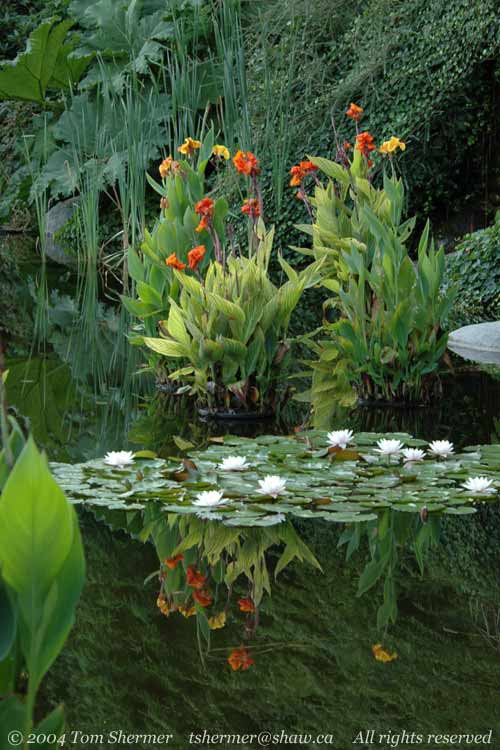 |
|
The cannas had fantastic
color. This is the actual color; it wasn't enhanced in Photoshop.
I rarely increase color saturation in postproduction, although
sometimes I get deeper color when I adjust contrast or brightness.
|
|
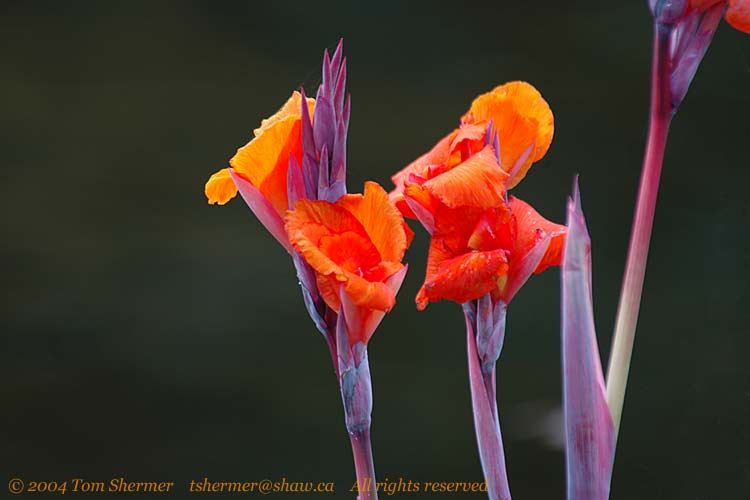 |
| Here's a
closeup on one of the waterlilies (genus Nymphaea). They have some
pink ones and some white ones there. |
|
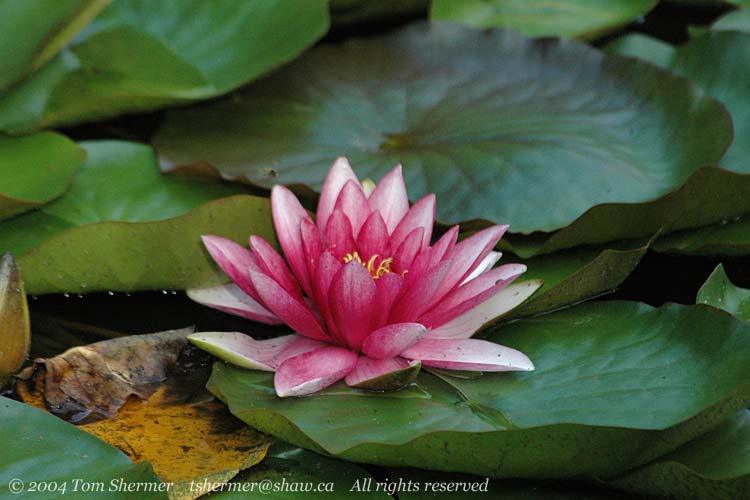 |
|
The next two shots
are of the same flower species at different stages of growth.
It's some sort of verbena, and quite an attractive one, at that.
|
|
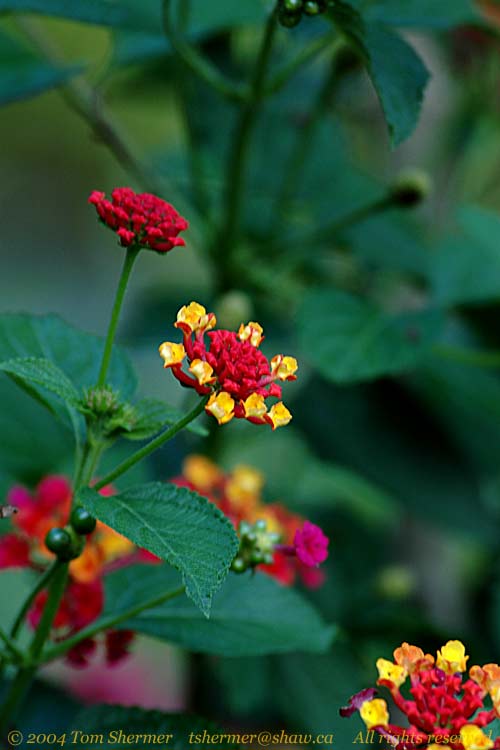 |
|
|
|
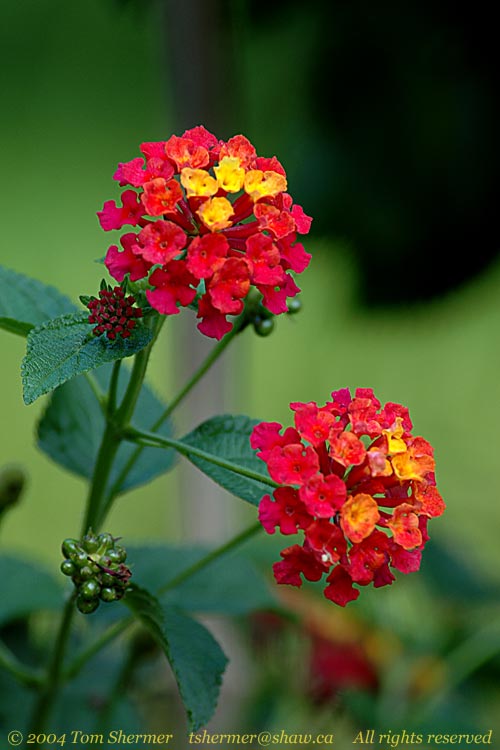 |
|
And to end up this
set, I have a collection of what I think are mostly Everlasting
Daisies (genus Bracteantha or Helichrysum). Everlasting
are also known as Paper Daisies or Strawflower. Whatever they're
called, they're wildflowery-lookin' things with weak stems.
|
|
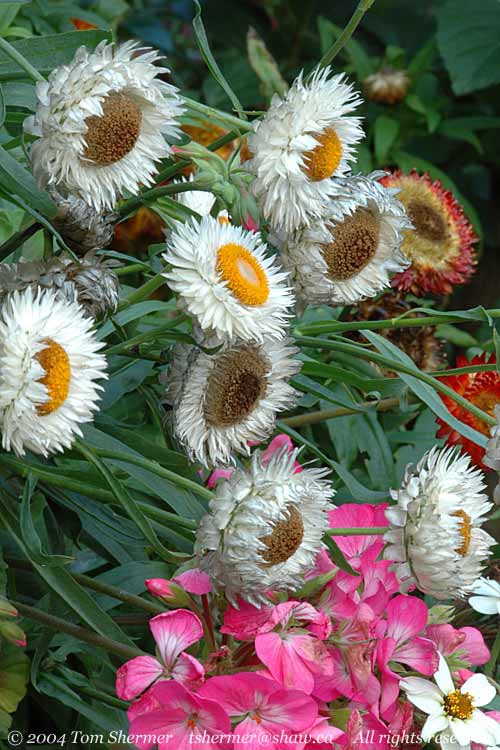 |
|
Anyhow, those were
my presentable images from the garden at the ravine. I guess I
have a lot more botany to learn before I'll be able to give more
insightful commentary than "ooh! look at these yellow ones!"
but that learning part is one of the things I really enjoy about
nature photography.
Your fearless flower
fotographer,
Tom
|
|
|